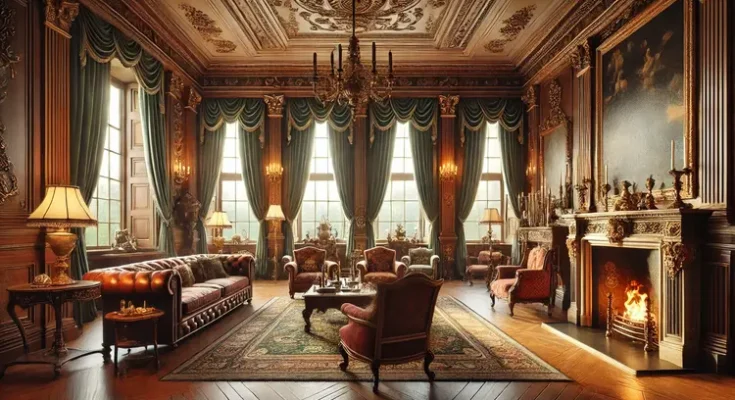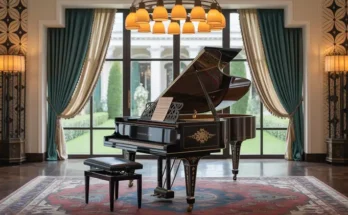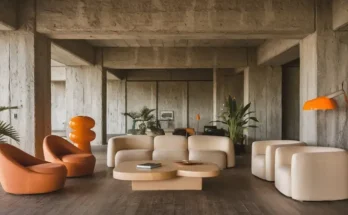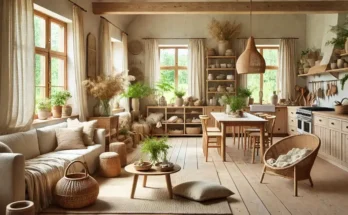Introduction
Georgian interior style embodies sophisticated elegance together with permanent appeal. This design continues to be relevant because it took its inspiration from architectural styles during the 18th and early 19th centuries. An interior design that applies Georgian elements creates spaces with dignified layout and harmonious symmetry.
Origins and Historical Significance
The period of Georgian interior design existed from 1714 to 1830 through the reigns of George I followed by George II and George III as well as George IV. The style adopted Roman and Greek classical architecture elements that showcase symmetry and proportional design while paying attention to refined elements.
During this time decorative craftsmen focused on working with handcrafted elements combined with natural elements along with multiple decorative moldings. The design philosophy strove to make interiors beautiful through structured design approaches. Palladian architecture served as inspiration to add high ceilings and elaborate fireplaces and cornices into the design of this era.
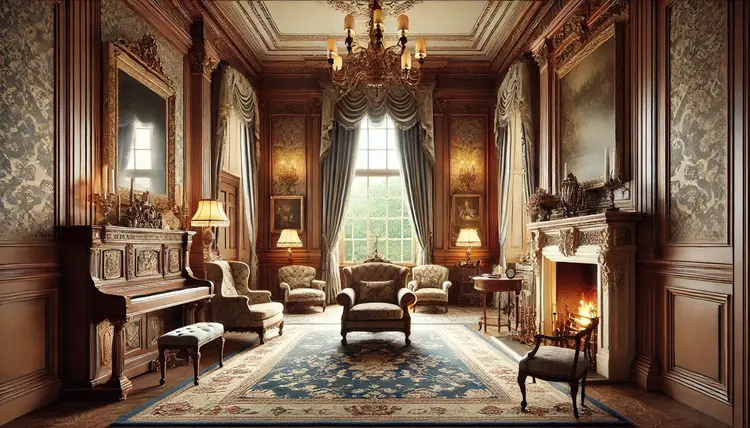
The upper class homeowners of the Georgian period used their budgets to purchase premium furniture combined with elaborate woodwork and showy embellishments which communicated their elevated position. Plaster decorative elements and other Georgian hallmarks appeared in basic versions even within the homes of lower economic status.
The central elements which define Georgian interior design consist of
2.1 Symmetry and Proportion
The essential elements in Georgian interior design focus on balanced layout shapes as well as equal spatial dimensions. A perfect symmetrical arrangement exists between windows, doors and fireplaces in most rooms throughout a space. Such equilibrium among designs generates an environment which both offers authority and elegance.
The traditional Georgian home design requires that people arrange their furniture according to balanced symmetries. The fireplace area includes two chairs placed symmetrically beside it and the main light fixture faces the main entrance. The accomplishment of this precise design depends on detailed execution along with proper planning.
2.2 Architectural Elements
Intricate architectural details define Georgian interiors. The most distinctive Georgian features consist of:
- Grand moldings within crown Molding and Cornices improve both wall and ceiling beauty.
- Wooden panels used as wainscoting together with paneling create deep textures.
- Grand Fireplaces are the central features that utilize either wooden or marble paneling around the opening.
- Plasterwork redecorates ceilings through the application of complex ornamental designs.
- The lavish decorations from this era make Georgian architecture persistently attractive.
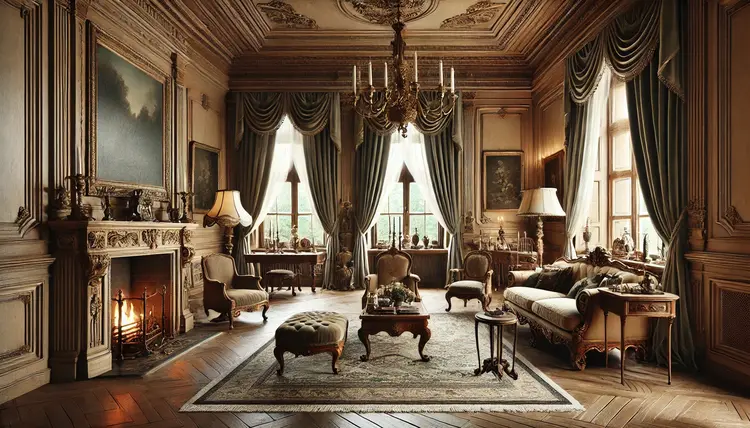
2.3 Color Palette
The typical Georgian interior uses an even mix of moderate light colors together with deep intense hues. Walls often feature:
- Pastel blue tones and sage green and warm gray color choices form the base of the design.
- Deeper hues such as burgundy, navy and mustard for accent areas.
- Ceilings and trims should use neutral shades to unite the space harmoniously.
- The combination of colors forms an inviting environment that maintains sophistication in Georgian interior spaces.
2.4 Furniture and Woodwork
Georgian interior furniture requires three essentials: it must be elegant while demonstrating superb craftsmanship and remain practical. Popular furniture styles include:
- Chippendale furniture displays lavish engravings and curving feet which rest on thick dark woods.
- The Hepplewhite style stands out through its simple curved furniture teamed with legged designs.
- Sheraton stands out due to its intricate inlays together with refined decorative elements.
Georgian furniture utilizes primarily three types of high-quality wood materials including mahogany and walnut alongside rosewood. The passing of time has proven these pieces withstand the years making them ideal for investment purposes.
2.5 Fabrics and Textiles
Rich fabrics and upholstery enhance Georgian interiors. Popular choices include:
- Silk and Damask: Used for curtains and upholstery.
- Velvet and Brocade: Add texture and luxury.
- Floral and Striped Patterns: Bring visual interest.
- The fabrics increase both comfort and luxury in these rooms.
2.6 Flooring
Traditional Georgian floors feature:
- Hardwood (oak or mahogany) with polished surfaces.
- Entryway installation of marble tiles creates a noble impact in spaces.
- Oriental and Persian rugs function as decorative elements which bring heat alongside vibrant colors to the space.
- The fusion of these elements creates the outcome of a genuine historical appearance.
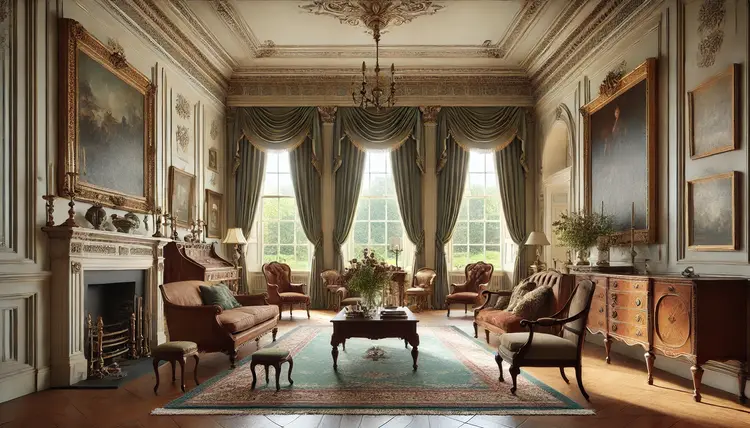
2.7 Decorative Accents
Georgian interiors strongly depend on the implementation of accessories. Essential decorative elements include:
Gilt Mirrors function as lighting reflectors to expand areas visually while adding brightness.
- Porcelain and China: Displayed in cabinets or on mantels.
- The paintings of classical subjects appear within frames made from gold material.
- Crystal Chandeliers: Add opulence and grandeur.
- The expertise behind selecting decorative details creates an elegant Georgian environment.
How to Incorporate Georgian Design in Modern Homes
The process of converting Georgian design for use in contemporary rooms requires careful consideration. Preserving essential qualities with contemporary functionality allows one to produce an enduring functional design.
3.1 Architectural Details
Interior transformation occurs instantly when you add paneling together with crown molding and architraves. The features create depth along with historic charm while unnecessary structural modifications remain unnecessary to achieve these effects.
3.2 Color and Lighting
A harmonious interior design results from applying soft colors to walls together with ceilings. Interior lights composed of chandeliers and wall sconces and table lamps add enchanting atmosphere which showcases the great stature of Georgian-style residences.
3.3 Furniture Selection
Using classic-inspired furniture accessories with curved shapes and wooden materials expressing wealth will help preserve genuine Georgian design. The implementation of antique and modern design elements creates a unique visual relationship that honors original character characteristics.
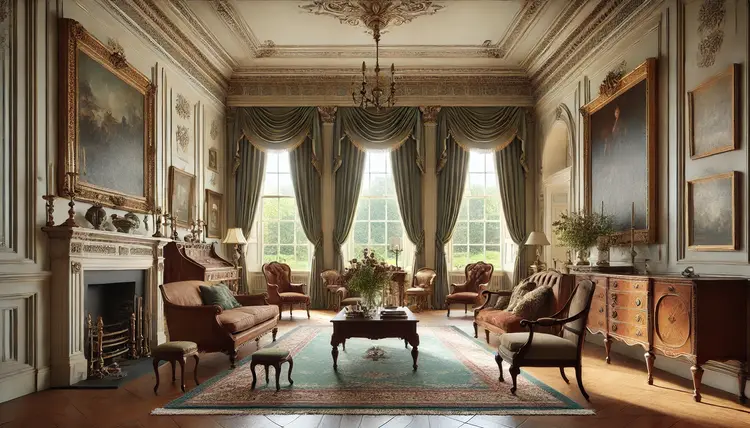
3.4 Decorative Elements
The display of vintage mirrors combined with Persian rugs and fine china objects brings Georgian elegance to the space. A minimalist design strategy controls overpopulation to achieve an elegant equilibrium.
4. Common Mistakes to Avoid in Georgian Interior Design
- A successful Georgian aesthetic requires a person to abstain from these three things:
- Multiples of decorative elements within one area disrupts the overall sense of balance.
- Linings an Ultra-modern furniture selection among period-specific pieces will reduce the harmonious look of Georgian design.
- Using asymmetry in design violates every essential rule of Georgian architectural principles.
- The use of highly saturated colors interferes with the characteristic Georgian color scheme.
- Discarding well-placed illumination results in diminished interior sophistication.
One preserves Georgian interior authenticity along with its elegant qualities when adhering to these guidelines.
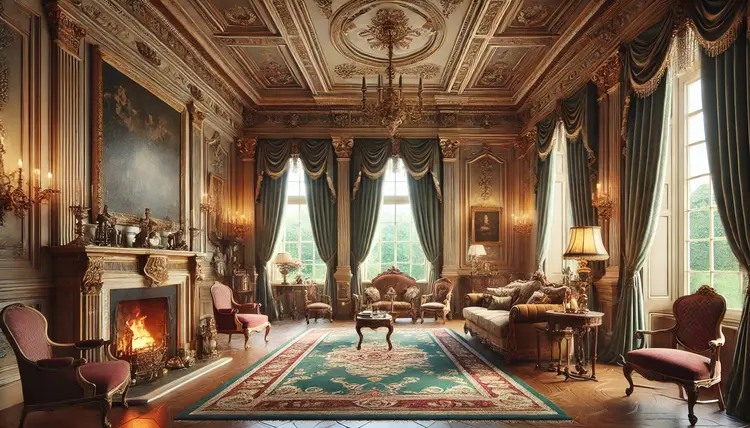
FAQs
What defines Georgian interior design?
Georgian interior style displays symmetrical arrangements along with formal decorative elements which includes elegant figures and tasteful fabric choices and exact measurements.
Which color schemes create the best effects in Georgian-interior decorations?
Soft pastels such as sage green, powder blue and warm gray define the aesthetic. Burgundy along with navy tones function as design accents in Georgian rooms.
What methods would help transform a contemporary house into a Georgian-style residence?
Modern functionality maintains its presence through the combination of crown molding with paneled walls and traditional furniture elements that create Georgian architectural appeal.
Traditional Georgian residences commonly use three main flooring options which are polished hardwood, marble tiles along with Persian rugs?
The authentic Georgian setting forms through combinations of polished hardwood floors with marble tiles and Persian rugs.
Georgian design makes space limitations in small rooms no barrier to its implementation?
Small spaces receive the appearance of increased space through using light-toned colors together with symmetrical designs and reflective decorative elements.
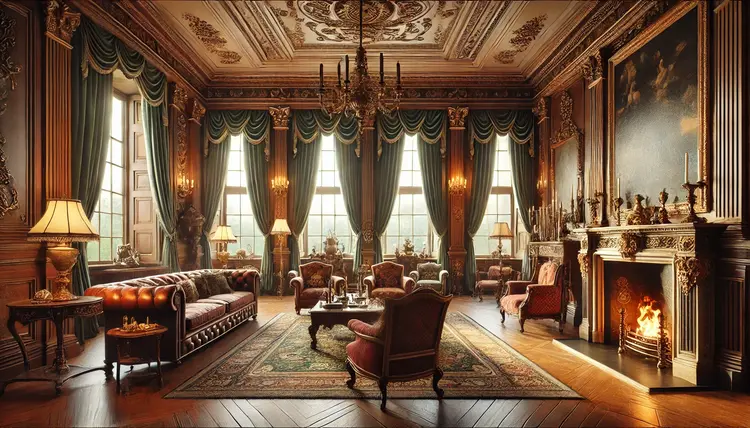
Conclusion
Georgian interior design serves as an enduring benchmark of sophisticated charm alongside enduring beauty. Modern home owners continue to find inspiration from the original aesthetic elements that characterized the Georgian period while admiring its symmetrical concepts along with refined details and classical influences.
Creating a Georgian-inspired home successfully in the present day requires knowledge of major style elements together with traditional ornamentation and error prevention which will allow a residence to endure through generations.

